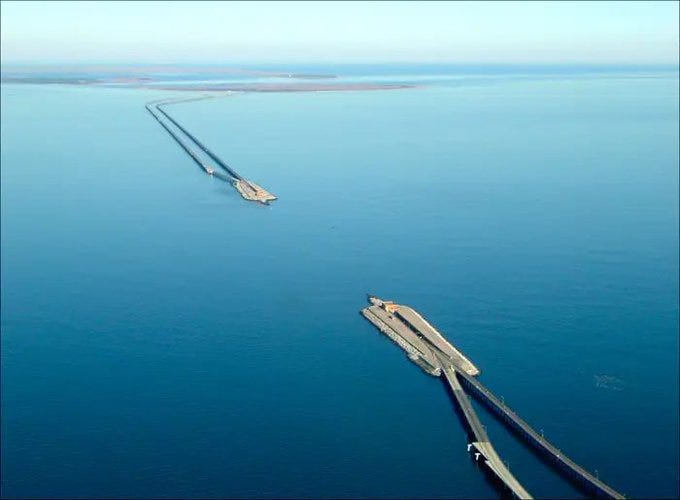How do you build a 28km road that runs over and underwater as deep as about 30m in some places and as shallow as 1m in others?
You build bridge-tunnels.
The Chesapeake Bay Bridge-Tunnel in Virginia, USA, is an engineering marvel.
It opened in 1964, combining long elevated bridge sections with two underwater tunnels. You’re above water for 16 km before quickly dipping 20m below the sea.
Until 2018, it was the longest of its kind in the world.
The ideal soil that holds the piles for the bridge section did not run in a straight line across the water; this is why the bridge curves.
Each pile was driven into the soil, cut to height and filled with sand and concrete. About 5,000 piles make up the bridge-tunnel.
The hybrid design allows it to keep large ships open for passage through the bay while facilitating vehicle traffic. The tunnels, each about a mile long, are connected to the bridge sections at four islands, each about as big as four football fields.
The workers dug a ditch in the sand under the water to make the tunnels and lined it with rocks. Then, the tunnel was delivered in pieces from the land. They lowered the tunnel pieces (plugged up) into the ditch and connected them with concrete. Finally, they unplugged the tunnel pieces.
Before the bridge was built, ferries hauled 60 cars at a time, or about 50,000 cars a month. It took 90 minutes, and bad weather or choppy waters sometimes delayed the ferry.
Some people find this bridge so scary that they hire people to drive them across, especially during inclement weather when the bay sloshes against it.




